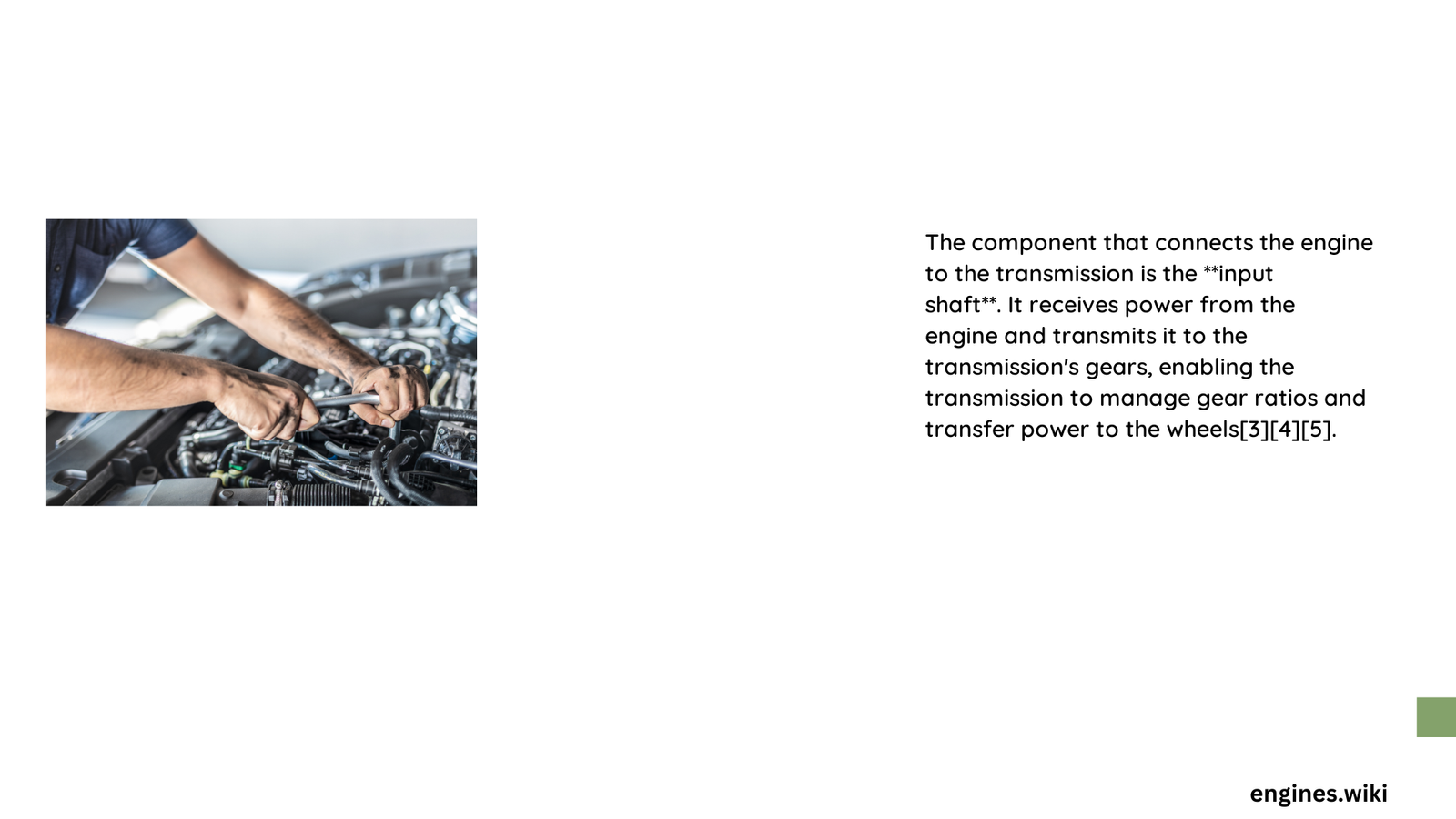In modern automotive systems, the torque converter serves as the critical interface between an engine and automatic transmission, enabling smooth power transfer through fluid dynamics and mechanical coupling. This sophisticated component allows engine rotation to be transmitted to the transmission while providing flexibility and shock absorption during vehicle operation.
What Exactly Connects Engine to Transmission?
The primary component connecting an engine to transmission is the torque converter, a fluid-based coupling mechanism that performs several crucial functions:
How Does Torque Converter Work?
- Fluid Coupling Mechanism
- Transfers rotational power through hydraulic fluid
- Allows slight speed variations between engine and transmission
-
Prevents direct mechanical connection
-
Key Components
- Impeller (pump)
- Turbine
- Stator
- Flexplate
What Materials Compose Torque Converter?
| Component | Material | Primary Function |
|---|---|---|
| Housing | Steel Alloy | Structural Support |
| Impeller Fins | High-Strength Aluminum | Fluid Redirection |
| Internal Bearings | Hardened Steel | Rotational Smoothness |
Why Is Torque Converter Critical?
The torque converter performs multiple essential functions:
- Power Transmission: Seamlessly transfers engine power to transmission
- Shock Absorption: Reduces mechanical stress during gear changes
- Fluid Dynamics: Enables smooth acceleration and deceleration
- Torque Multiplication: Increases initial acceleration force
What Happens During Torque Converter Operation?
When an engine runs, the impeller spins and pushes transmission fluid against the turbine. This fluid movement creates rotational force, effectively transferring power without direct mechanical contact. The stator redirects fluid flow, enhancing efficiency and torque multiplication.
How Large Are Typical Torque Converters?
Most passenger vehicle torque converters measure:
– Diameter: 10-15 inches
– Weight: 25-40 pounds
– Thickness: 6-9 inches
What Factors Influence Torque Converter Performance?
Several critical factors impact torque converter effectiveness:
- Fluid Quality
- Operating Temperature
- Mechanical Tolerances
- Maintenance Frequency
What Are Potential Torque Converter Issues?
Common problems include:
– Fluid contamination
– Bearing wear
– Impeller damage
– Turbine misalignment
How Much Does Torque Converter Replacement Cost?
Replacement costs typically range:
– Standard Vehicles: $500 – $1,000
– Luxury/Performance Vehicles: $1,000 – $2,500
What Maintenance Prevents Torque Converter Failure?
Recommended maintenance practices:
– Regular transmission fluid changes
– Periodic system inspections
– Addressing early warning signs
– Professional diagnostic checks
Conclusion

Understanding the torque converter’s role reveals its complexity and importance in modern automotive powertrains. This remarkable component ensures smooth, efficient power transfer while protecting mechanical systems from excessive stress.
